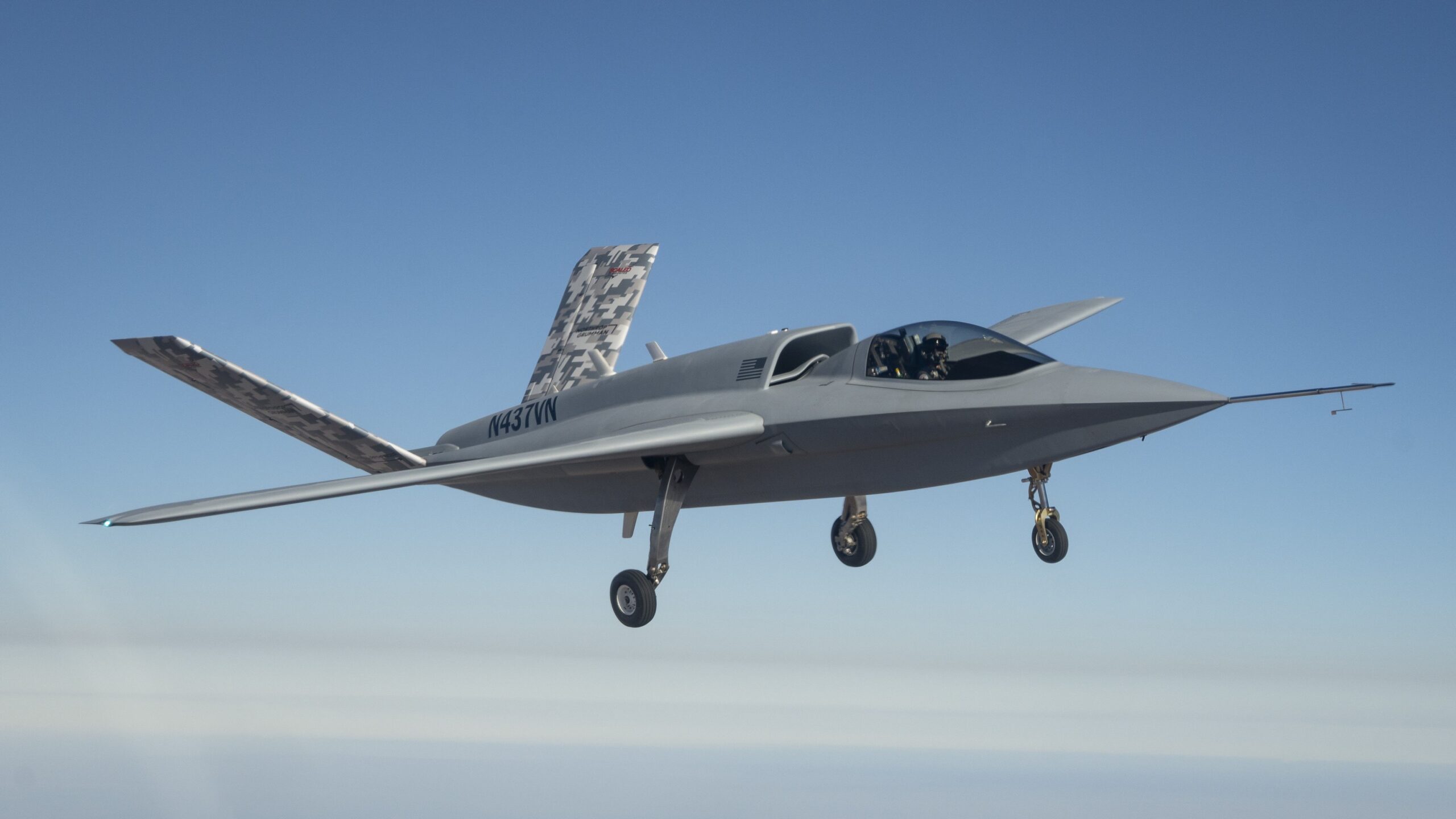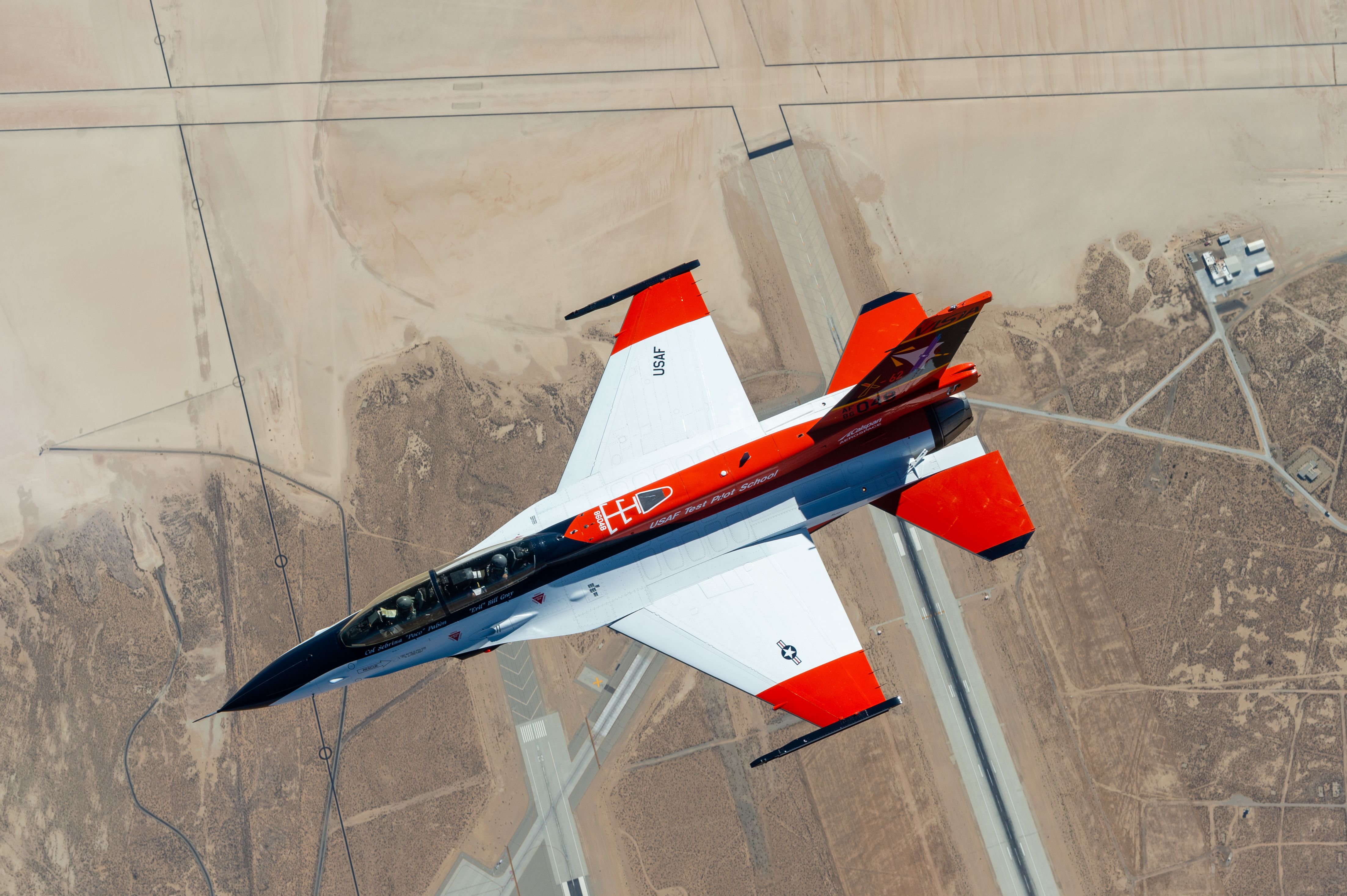Summary
- Model 437 Vanguard has a human pilot for testing due to US FAA airspace regulations.
- There is a rush to field Collaborative Combat Aircraft (CCA) due to budget priorities and urgency.
- Model 437 Vanguard features a Pratt & Whitney 535 Turbofan Engine, removable wings, and mission adaptability.
In an intriguing development in the effort to develop uncrewed aircraft, a prototype commissioned by Northrop Grumman and built by its subsidiary Scaled Composites has a human pilot. The reasoning for having a human pilot in a likely
Collaborative Combat Aircraft
(CCA) competitor comes down to
Federal Aviation Administration
(FAA) regulations.
Navigating airspace restrictions
According to a September 6 report by Air & Space Forces Magazine, Northrop Grumman’s subsidiary firm Scaled Composites – founded by Burt Rutan, who helped build the Rutan Voyager – built a low-observable, multi-mission, low-cost aircraft with removable wings that can be sacrificed. Remember, the CCA is intended to be stored until truly necessary – and help crewed fighter pilots by taking on dangerous missions in high-risk environments. So why is Scaled Composites’ Model 437 Vanguard packing a pilot?
See, there is minimal United States overland airspace for unmanned testing authorized by the FAA, which regulates American airspace. As Colin Miller, Northrop’s senior vice president for engineering, e-mailed Air & Space Forces Magazine;
Having the Model 437 Vanguard crewed “Provides many advantages to demonstrating capabilities without the need to gain special permitting to fly an autonomous aircraft in national airspace.”
Although permitting is important for public safety, permits take time, and the national defense need for CCA is increasing. Already the US Air Force has chosen two firms to develop the first generation of Collaborative Combat Aircraft (CCA), so the Model 437 Vanguard is intended for future generations of CCA.
The question that should be asked is: Why is there a sense of urgency on CCA?
Why is delivering CCA urgent?
There is a rush to get CCA airframes fielded and ready, and already CCA is a budget priority for the US Air Force. Recently it was announced that multiple rounds of CCA contract awards were in the works. The logic is, as Heather “Lucky” Penney, a former F-16 fighter pilot and current persistent voice for airpower as a Senior Resident Fellow at the Mitchell Institute for Aerospace Studies, shared at the 2024 AFA Warfare Symposium,
“It’s important that as we look towards CCAs and think about the operational concepts, how we will employ them, where we need to have them. We cannot treat them as if they’re just another aircraft. And we’re doing the same old things just with new things because then we will lose the opportunity to truly disrupt the adversary, force them to go Winchester, let’s deplete their weapons magazines, mess up their game plans, so we get them off their game and outside of their OODA [observe, orient, decide, act] loop, and fundamentally change the risk calculus and increase our mass. So there are important things that CCAs can do for us.”
Additionally, Penney shared on the Aerospace Advantage Podcast in depth her views on the development and use of the CCA one can listen to;
An additional public-facing voice for the CCA is US Air Force Major General R. Scott Jobe who also said at the 2024 AFA Warfare Symposium,
Some would say, “I hate looking at pilots,” and tell them, “I don’t want them flying airplanes again.” I would say, “I want to keep them alive.” And so we had no flinch from any of the operational community about culturally absorbing this capability, that potentially could threaten pilots flying aircraft in the future, because what we want to do is what’s best for our Air Force, first and foremost.
Major General Jobe also discussed the need to build up mass in the US Air Force. As many have also noted, CCA allows for easily replicable training via artificial intelligence without expensive investments in human pilots and training human pilots for combat flight operations.
Finally, speaking of artificial intelligence and fighter planes, another test vehicle is flying with human pilots supported by artificial intelligence in the X-62A – a modified version of the Lockheed Martin F-16D Viper. So, the Model 437 Vanguard is building on recent aviation testing precedents.
Finally, Breaking Defense posted on September 6 this explainer about the status of the CCA:
But all of this data about the CCA does not answer how the Model 437 Vanguard’s pilot actually tests the autonomous technology making the prototype a potential future CCA candidate.
So what does a pilot do to help test autonomous technology?
A pilot can help test autonomous technology by ensuring safety in flight. For example, a human pilot can turn off the autonomous technology on a test airplane for safety if the test airplane is heading too far out of course or too close to another aircraft in a mock dogfight. By not having to legally wait for FAA permission to launch a fully autonomous version of the Model 437 Vanguard, this autonomous technology can be tested faster – and safely.
About the Model 437 Vanguard
According to Scaled Composites – who built the Model 437 Vanguard for Northrop Grumman – the test vehicle has these basic characteristics:
- Engine: One Pratt & Whitney 535 turbofan engine with 3,400 pounds of thrust
- Wingspan: 41 feet
- Length: 41 feet
- Maximum Takeoff Weight: 10,000 pounds
- Range: 3,000 nautical miles and 6 hours
- Payload: 2,000 pounds or 2 AIM-120 air-to-air missiles
- Take-off Run: 3,000 feet
- Maximum altitude: 25,000 feet
- Cruise speed: 0.85 Mach
The Model 437 Vanguard is an evolution from Scaled Composites’ Model 401 Sierra, of which only two were built. The design of the Model 437 Vanguard took 21 months to develop and first fly.


